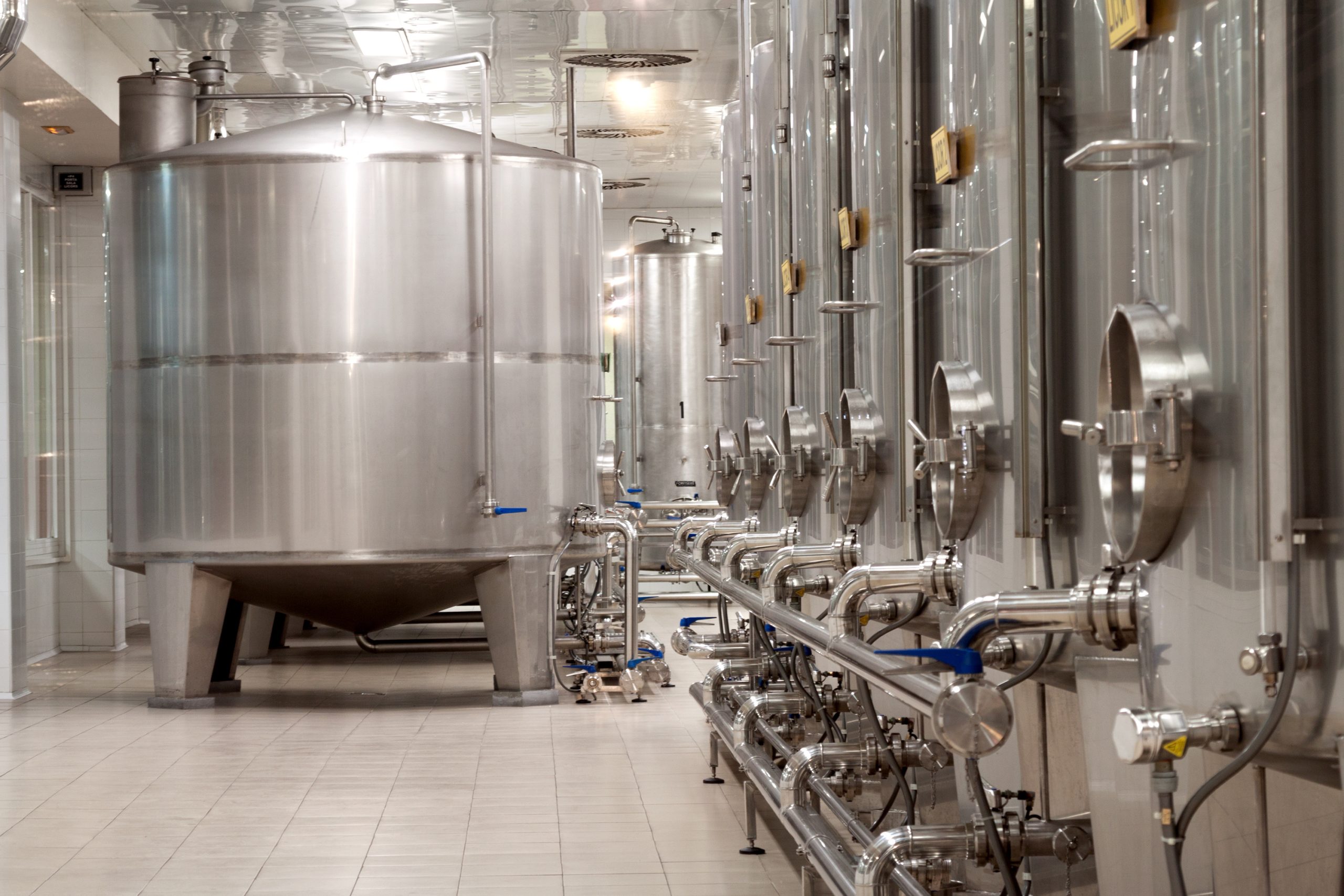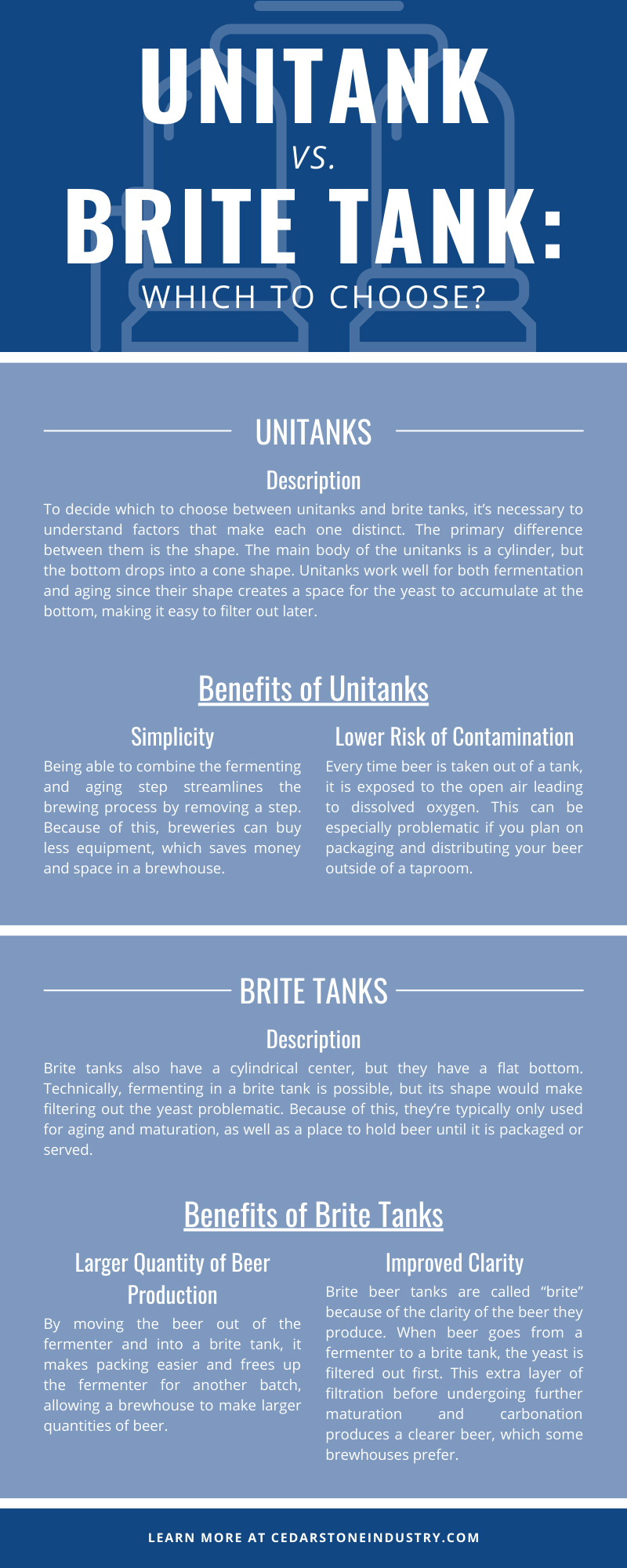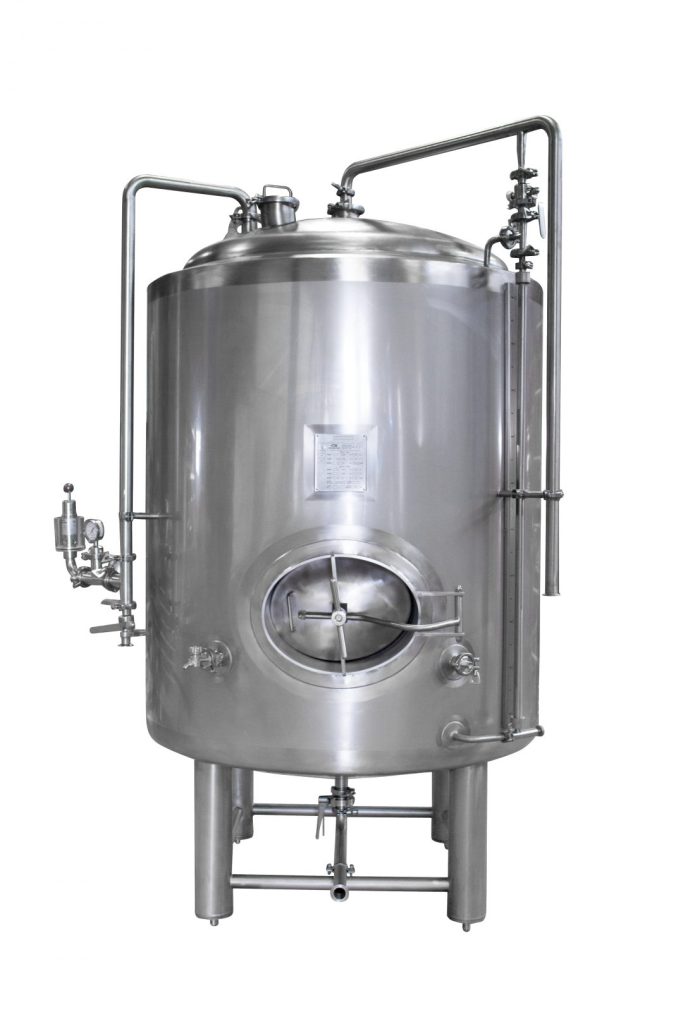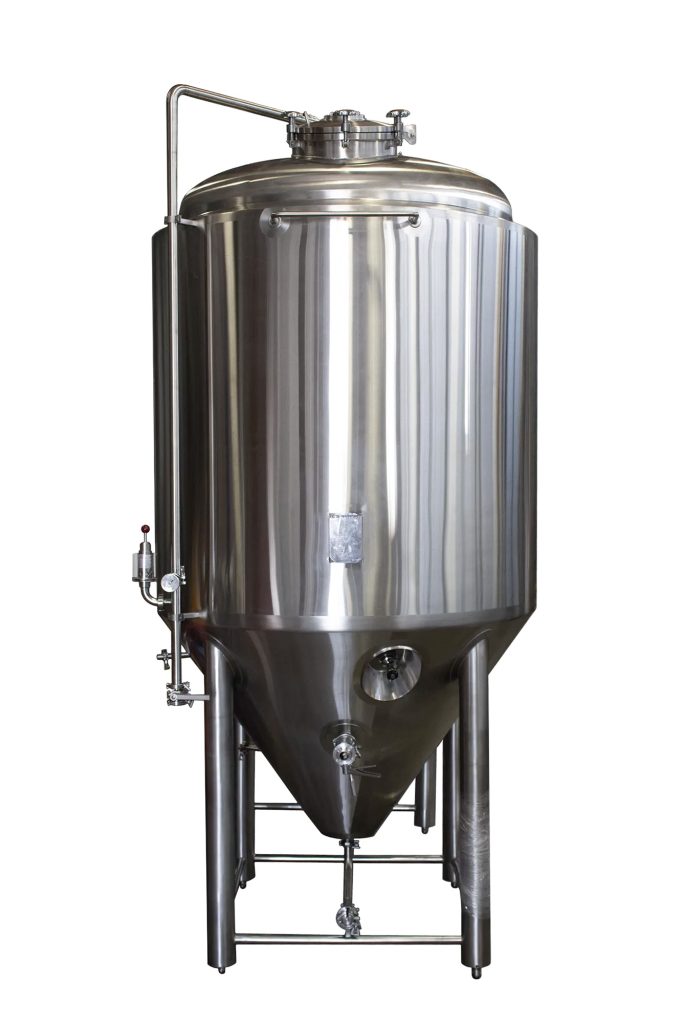Unitank vs. Brite Tank: Which To Choose?
Posted on March 11, 2021 by xtxwebmaster
There are many fine details in the brewing process, and each of those details represents a choice that ultimately impacts the quality of your beer. Which hops will you use? How long are you going to leave them in the wort? What material are you going to use for your equipment?
One of these questions turns our attention to the end of the brewing process, when the beer is fermenting or needing to go somewhere so it can mature. The question then becomes where to store it, which puts brewers in the throws of the debate of unitank vs. brite tank. Which to choose? We’re here to put the question to rest.

Unitanks
Description
To decide which to choose between unitanks and brite tanks, it’s necessary to understand factors that make each one distinct. The primary difference between them is the shape. The main body of the unitanks is a cylinder, but the bottom drops into a cone shape. Unitanks work well for both fermentation and aging since their shape creates a space for the yeast to accumulate at the bottom, making it easy to filter out later.
Benefits of Unitanks
Simplicity
Being able to combine the fermenting and aging step streamlines the brewing process by removing a step. Because of this, breweries can buy less equipment, which saves money and space in a brewhouse. Along with this, it saves workers time and labor. Workers do not have to take the time to move the beer from one point to the other and are able to dispense the beer directly from the unitank.
Lower Risk of Contamination
Every time beer is taken out of a tank, it is exposed to the open air leading to dissolved oxygen. This can be especially problematic if you plan on packaging and distributing your beer outside of a taproom. Along with this, beer may also be exposed to other contaminants like microorganisms. While these organisms are not typically lethal, they can lead to some awful-tasting beer, which is the last thing you want. Using a unitank lessens this contamination risk.
Brite Tanks
Description
Brite tanks also have a cylindrical center, but they have a flat bottom. Technically, fermenting in a brite tank is possible, but its shape would make filtering out the yeast problematic. Because of this, they’re typically only used for aging and maturation, as well as a place to hold beer until it is packaged or served.
- Brite Tank
- Fermentation Tank
Benefits of Brite Tanks
Larger Quantity of Beer Production
Some facilities brew so much beer the process of brewing and packaging are two separate operations. In these instances, fermenting beer and serving it would need to be done in two separate areas of the brewhouse, making unitanks impractical. By moving the beer out of the fermenter and into a brite tank, it makes packing easier and frees up the fermenter for another batch, allowing a brewhouse to make larger quantities of beer.
Improved Clarity
Brite beer tanks are called “brite” because of the clarity of the beer they produce. When beer goes from a fermenter to a brite tank, the yeast is filtered out first. This extra layer of filtration before undergoing further maturation and carbonation produces a clearer beer, which some brewhouses prefer.
Choosing Between the Tanks
When To Choose a Unitank
Unitanks are the perfect choice for microbreweries or brewpubs. For these facilities, space is often limited, the brewery isn’t producing as many barrels of beer, and the emphasis is less on packaging and more on serving brews directly. Unitanks work well in these contexts because they save space and labor without muddling the productivity of a separate packaging team.
When To Choose a Brite Beer Tank
Brite tanks are better for larger-scale productions, especially productions that rely on packaging and shipping much of their product. Brite tanks allow you to leave more fermenters open at a time. And because brite tanks can carry more liquid in them at a time, they lend themselves to larger beer outputs. Generally, if you’ve gone over the edge and are brewing more barrels than a microbrewery, it may be a good idea to look at a brite tank.
What Cedarstone Industry Offers
As a brewery tanks manufacturer, Cedarstone Industry knows that choosing the right tank is essential for your brewery to function well. That’s why we offer a number of different features on our high-quality unitanks and brite tanks that are designed to help serve your company’s needs.
Jacketed Tanks
As with all other parts of the brewing process, fermentation is a process that requires precision. That is especially true of temperature control. If the temperature is not kept at the perfect levels, you risk the yeast not fermenting at a proper rate. Even during the maturation process, improper temperature control can impact the beer’s carbonation and clarity. That’s why our jacketed tanks are well insulated for maximum temperature control.
“One-Touch” Racking Arm
When you have a conical brew tank, a racking arm is a must for removing sediment out of your beer for the highest clarity. But, as useful as they are, rack arms can be cumbersome to manage. That’s where our “one-touch” racking arms are different. They are able to be rotated simply by turning a handle without loosening any clamps. Along with this, the pivoting inner tube rotates separately from the tri-clamp connecting outer fitting. This ensures there are no leaks.

CIP Spray Balls
As we mentioned, outside contaminants lead to awful beer. So, cleaning the tanks regularly is essential for good beer. However, the harder it is to clean the tanks, the more likely it is that bacteria will be left behind. Fortunately, our tanks come equipped with clean-in-place spray balls designed to reach the entire interior of the tank effectively. This means a cleaner tank with less effort for you and your employees.
Our tanks are well made, and with nearly thirty years of experience, we are well-equipped to help you make the choice that’s best for your company.



